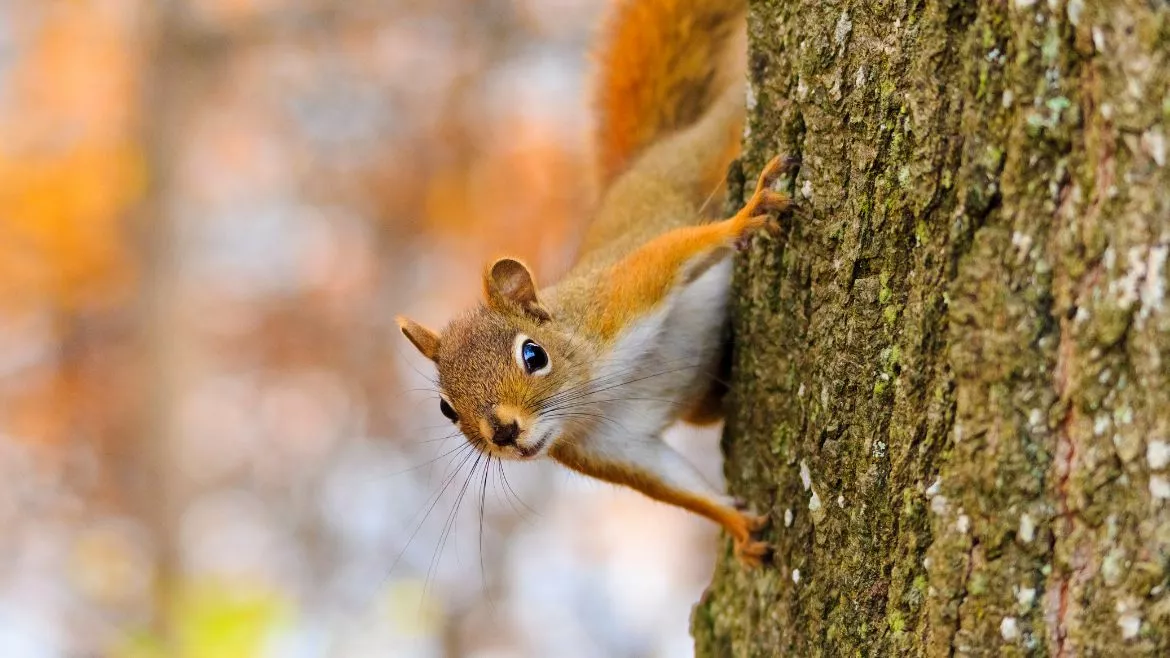Squirrel Removal Services in Oshawa, Ontario
How to remove a squirrel yourself
Inspect your property: Look for signs of squirrel activity, such as gnaw marks on wood, holes in your roof or walls, and droppings.
Seal off entry points: Squirrels can enter your home through holes as small as 2 inches wide, so it's important to seal off any openings you find. Use steel wool or hardware cloth to block the holes and seal them with caulking or expanding foam.
Remove food sources: Squirrels are attracted to gardens and bird feeders, so removing these sources of food may deter them from your property.
Use traps: Live traps can be set to capture squirrels without harming them. Once trapped, they can be relocated to a more suitable area.
Hire a professional: If the infestation is severe or you are not comfortable handling the problem yourself, consider hiring a professional wildlife control company to handle the situation.

How squirrels destroy property
How squirrels spread diseases
Leptospirosis: a bacterial infection that can be spread through contact with urine or other bodily fluids from infected animals.
Tularemia: a bacterial infection that can be spread through contact with infected animals or their urine, feces, or blood.
Rabies: a viral infection that is transmitted through the saliva of infected animals, typically through a bite or scratch.
Salmonellosis: a bacterial infection that can be spread through contact with infected animal feces or by eating food that has been contaminated with squirrel feces.
How to deter squirrels from coming to your home
Remove food sources: Squirrels are attracted to homes that provide easy access to food, such as bird feeders or fruit trees. Removing these sources of food will make it less likely for squirrels to visit your property.
Seal entry points: Inspect your home and seal any openings or cracks where squirrels might be able to enter, such as holes in the roof or gaps in the walls.
Use repellents: You can use commercial repellents, such as sprays or granules, that contain predator urine or other scents that squirrels find unpleasant.
Install barriers: You can install physical barriers, such as wire mesh or sheet metal, around the base of trees or other areas where squirrels are likely to climb.
Trim trees: Trim tree branches that are close to the house or other structures, making it more difficult for squirrels to gain access to your property.
Traps: You can use humane traps to capture and relocate squirrels that are causing problems.
Research potential companies: Look for companies that specialize in wildlife removal and have experience dealing with squirrels. Read online reviews and check for any complaints or negative feedback.
Verify credentials: Make sure the company is licensed, insured, and has a good reputation in the community.
Get estimates: Contact a few different companies and ask for a written estimate of the cost of the services you need. Be sure to ask about any additional fees or charges.
Check their methods: Make sure they use humane methods to trap and remove squirrels.
Ask about follow-up services: Some companies may offer follow-up services to ensure that the squirrels do not return, or to repair any damage they may have caused.
Schedule an inspection: Schedule a time for the company to come out and inspect your property to determine the extent of the problem and the best course of action.
Sign a contract: Make sure you understand the terms of the contract before you sign it, and ask about any guarantees or warranties for their services.






